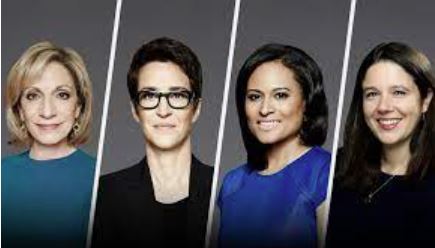


“I’m Afraid to Open Twitter”: Next-Level Harassment of Female Journalists is Putting News Outlets to the Test
By Charlotte Klein, writing for Vanity Fair…
It started late one day, and you could see it kind of building on social media,” Washington Post national editor Steven Ginsberg recalled of the torrent of online abuse directed last month at Seung Min Kim. The Post reporter had been photographed showing Senator Lisa Murkowski a critical tweet sent by Neera Tanden and seeking comment, a standard journalistic practice somehow interpreted as out of bounds or even unethical. The first thing Ginsberg and other Post editors did was reach out to Kim—“just to say: We’re here, we see it, we care, and how are you doing?” But the racist and sexist attacks only escalated, propelling Ginsberg to put out a statement to not only take a stand against harassment, but to try to move the ball forward by explaining why what Kim was doing was completely appropriate. “She and other minority women endure vile, baseless attacks on a daily basis, no matter what story they are working on or tweeting about,” he wrote. “The attacks on her journalistic integrity were wildly misguided and a bad faith effort at intimidation.” Ginsberg’s goal, he told me, was “to defend and educate.”
No journalist is above criticism. But what female journalists described to me goes beyond legitimate scrutiny of a headline or story framing and into their sex lives, their families, and other topics unrelated to their work, a wildly disproportionate level of pushback to any perceived journalistic offense. The old newsroom motto “don’t feed the trolls” seems increasingly quaint as top editors and media executives grapple with how and when to respond publicly to the deluge of smears filling a reporter’s inbox or chasing them across social media. “The environment for journalists is getting increasingly dangerous,” Ginsberg said. If not heralding a new era of how media organizations deal with attacks on female reporters, recent statements from the Post and The New York Times reflect the extent to which the problem has worsened, particularly for women on the male-dominated beats of politics and technology.
Earlier this month the Times issued a strongly worded defense of tech reporter Taylor Lorenz, whom Fox News’s Tucker Carlson sicced his followers on by bashing her on his prime-time program for, ironically, speaking out about how destructive the online harassment she’s experienced has been to her life and career over the past year. A week later the Times put out another statement—this time defending Rachel Abrams from “harassment” by One America News after the right-wing network urged viewers to contact the reporter over her upcoming “hit piece.” The statements were striking given that institutions like the Post and the Times don’t tend to acknowledge the toxic internet culture their reporters are constantly subject to. Speaking of the Lorenz incident, one reporter at the Times told me that she was glad the paper put out a statement “to show that the organization was identifying what was happening” and calling it out for what it was.
But the Times reporter, along with several other female journalists, said that overall, major media companies are not doing enough to support them, in part because a lot of news organizations believe the best way to deal with online abuse is to ignore it; journalists are coached to do the same. “What that ignores is the emotional toll that it takes on reporters, and the fact that it’s often a misunderstanding of our reporting” that warrants a response, the Times journalist said, noting that she’s seen false narratives about her work perpetuated because the paper’s social media policies keep her from commenting or engaging. Compounded with the lack of response from leadership, “you’re really just left with this feeling of being hung out to dry,” she told me. (The Times declined to make an editor available to discuss how the paper handles harassment of its reporters.)